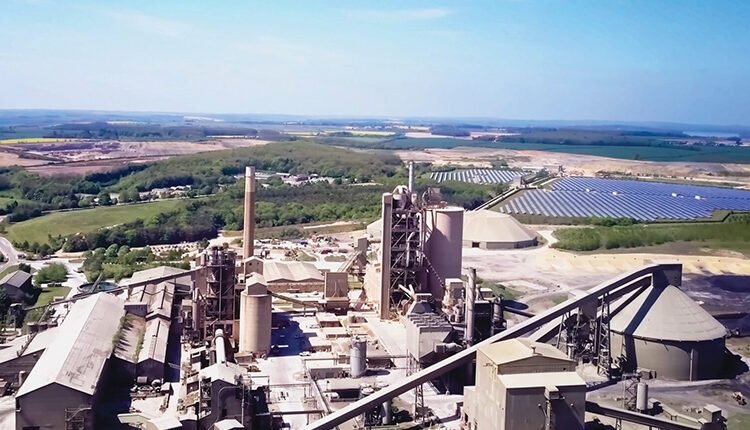Industrial filtration is a vital safety shield that silently safeguards the workers, machinery and the environment from a storm of hazardous dust and emissions. Cement and steel plants are the most dust-intensive industries, thus they need a special filtration setup to provide a clean environment and to support and promote industrial sustainability.
In many heavy industries, the idea of safety is frequently restricted to visible measures, such as helmets, harnesses or fire extinguishers. But rapid hazards such as invisible particles, corrosive fumes, and toxic gases pose equally serious risks. Workers may not see them, but the inhaled particles are the reasons for respiratory diseases, decreased life expectancy and poor health among the whole population of people around factories. Filtration
thus is not only a technical device but rather the first barrier from both work diseases and environmental impoverishments. By addressing what cannot be seen, the industrial sector is improving and strengthening their culture of safety.

Director, ClipOn.io
Versatile Filters for Varied Dust Hazards
Filters in industries have to deal with the whole spectrum of particles from the abrasive dust from steel to sticky cement powder, and from acidic fumes to high-temperature residues. The first step in ensuring adequate filtering is the selection of the correct filter media that meets the specific demand of the dust and the operating process.
Blast Furnaces & Steel Mills: They produce dust particles here that resist any general preventive measures. PTFE-lined and fiberglass filter bags-besides withstanding corrosive steel-derived particulates from extreme heat-are maintaining integrity with temperatures reaching 260 °C or more.
Ferroalloy & Ferrous Production Plants: Nomex filter bags are the best option for handling the dust produced by ferro plants with both chemical resistance and mechanical strength, thus ensuring reliable performance under difficult airborne particulate loads.
SMS, DRI, Pellets Facilities: Polyester bags coated with PTFE provide essential durability and dust-repellent properties. The bags combine the advantages of mechanical toughness with chemical resistance and they are efficient in dealing with a wide range of industrial particulates.
Cement Units: Dust Sources and Preferred Filtration
The production of cement is associated with dust as long as it starts with raw material handling and to the packaging. These are the main filter material is matched with the dust source:
Raw Mills: The fine cement dust that is often rich with silicates is best perceived by fiberglass filter bags which are resistant to abrasion and high temperatures.
Cement Mills: The abrasive, fine dust here requires filters that can endure wear and tear while maintaining performance.The acrylic bags are particularly suitable, providing flexibility and resistance in milling environments.
Packing Plants: During bagging, cement dust on the air becomes a problem bound to caking. Polyester filters with the PTFE coatings are the most efficient means of capturing these fugitive emissions and they also help ensure cleaner air. Beyond Basics: Flue Gas Desulphurization (FGD)
Beyond Basics: Flue Gas Desulphurization (FGD)
Industries that are using fuels or are involved in kiln operations can always have Flue Gas Desulphurization systems (FGD) added in order to scrub sulfur dioxide from emissions. Even though FGD is not a particulate filter, it still works in parallel with the filtration systems as a part of an atmospheric emission reduction program that removes chemical hazards and makes a contribution towards dust-control measures.
FGD is also a community safeguard. Sulfur oxides are leading causes of acid rain, which harms soil, demolishes buildings, and tarnishes water sources. In the process of adopting the FGD method along with bag filtration, industries do not just ensure the minimum compliance but also actively contribute to the betterment of ecosystems and improve relations with the local community. Such actions over time will help them avoid costs on penalties, litigations, and reputational losses.
Innovation Meets Environment: IoT and Monitoring
Focusing on the recent innovation of parallelism filtration with digital monitoring. The IoT systems can now monitor real-time conditions such as pressure drops, dust loading and flow rates giving an option for proactive maintenance, which leads to a reduction in downtime. Smart sensing technology helps to turn filter stations into guardians that signal filter changes, show performance drops and even alert for outsider attacks so the safety managers can act faster and prevent environmental and health risks.
 Professional-Grade Media in Action
Professional-Grade Media in Action
The industrial high-performance air filter bags and relevant perforated supports are built robustly and can perform even under thermal stress, infection from oils and abrasion by dust. Extended PTFE media can endure very high temperature conditions, keeping stable integrity even with fire and particulate matter abrasion. Meanwhile, PPS (Polyphenylene Sulfide) filter bags are impervious to acid while remaining strong and are the best choice in a dust environment that has acidic or reactive properties.
These properties indicate that customized filtration media are the primary level of safety shield protecting equipment, environments, and workers from dangerous emissions.
Safety in Practice: Cleaner Air, Safer Operations
Clean air quality is beyond being an environmental legal necessity. It is an essential element in the workers’ well-being, machinery, and the factory’s public image.
Keep the workers from inhaling the hazardous dust or working under dangerous particulate loads.
Reduces maintenance costs and potential of equipment damage due to abrasive or corrosive dust.
Assist in environmental compliance by reducing the amount of waste and GHG emissions.
Increase the uptime profitability through smart monitoring and timely filter replacement.
Industrial filtration remains as the unrecognized hero. From blast furnace steel mills to cement packing plants, a variety of filters such as fiberglass, acrylic, polyester with PTFE, Nomex and PPS act as guard against air pollution, wear and tear of machines and health threats. The addition of monitoring systems by the IoT and the application of filtration technology that is precise and trustworthy, make it possible for the filtration systems to act not just as equipment but as safety shields.
As industrial facilities are trying to find equilibrium between production and cleanliness. The tailored filtration delivers qualities of real safety, sustainability and economic value ensuring each processes of cleaner, safer, and smarter.


